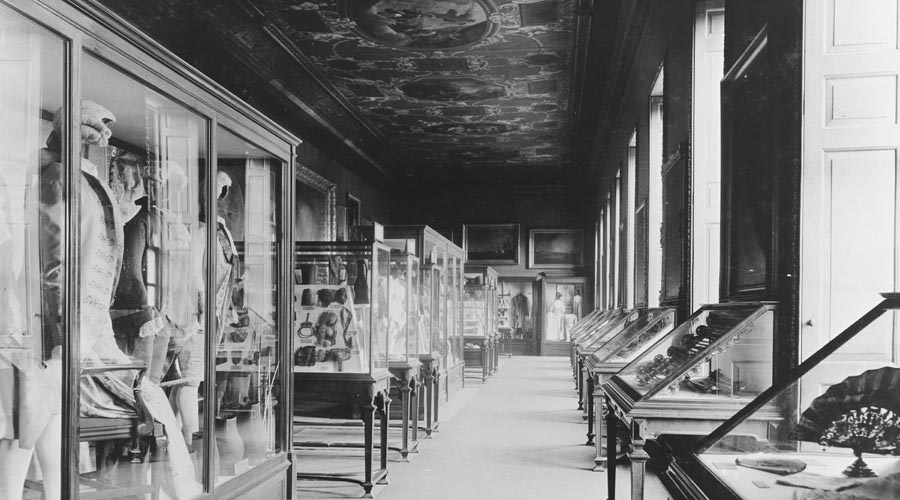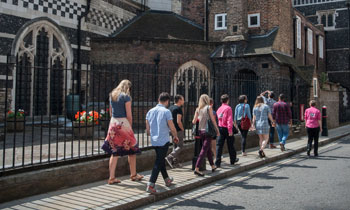Our organisation, our story
Little could archivists of a small piece of Roman mosaic have imagined the museum growing into the urban and social history centre visitors see today. We now receive over a million visitors to our museums each year.

Social and urban history
From 1912 we have collected costumes, paintings and objects along with archaeology
The road from Rome
The focus of the original Guildhall Museum, founded in 1826, was on archaeology. Its first acquisition was a fragment of Roman mosaic from Tower Street in the City of London.
The London Museum, established in 1912, had wider interests and collected modern objects, paintings, and costumes.
Following the Second World War the museums amalgamated to form the Museum of London.
A new home
Doors to our current site opened in 1976. We have become a centre of social and urban history and continue to maintain our archaeological interests.
We unveiled a second site in 2003, the Museum of London Docklands, housed in a Grade I listed warehouse at Canary Wharf, not far from the river Thames.
Timeline
1826
Guildhall Museum opens in the City of London. It moves to new premises in 1872.
1912
The London Museum opens at Kensington Palace, near Hyde Park, and moves to Lancaster House in the West End of London in 1914.
1940s
The museums close during the second world war. The London Museum reopens in 1951 in Kensington Palace. The Guildhall Museum reopens in 1955 in the Royal Exchange, a site of commerce in the City of London.
1965
The Museum of London Act amalgamates the collections. A new board of governors is appointed to represent the funding authorities – the government, the Corporation of London, and the Greater London Council.
1976
The Museum of London is opened by Queen Elizabeth II. Our new building is designed by architects Powell & Moya.
1986
A second Museum of London Act expands the museum’s functions and alters the funding framework, following the abolition of the Greater London Council.
1992
Mortimer Wheeler House, a former warehouse in Hackney, becomes the museum’s main store and subsequently its archaeological hub.
2003
The Museum of London Docklands opens in a Grade I listed warehouse at Canary Wharf, not far from the river Thames.
2009
The government’s interest in the museum is transferred to the Greater London Authority.
2015
We announce our intention to move to a new museum in Smithfield General Market.
2016
We launch International Design Competition for an architect to design the new museum at West Smithfield.
2022
The Museum of London at London Wall closed in December 2022 to prepare for the move to a new museum at West Smithfield, opening in 2026.
Learn more about the museum’s history in The Treasury of London’s Past by Francis Sheppard, published by the Museum of London in 1991.








